Baked chicken breasts are wonderful because they are naturally lean and packed with protein. All you have to do is coat them with some oil and herbs, and bake them. If you want really juicy chicken breasts, you should cook them at a high temperature such as 400 F to seal in the juices but be careful not to overcook them. This post will show you how long to bake chicken breast at 400 F in the oven, in an air fryer, from frozen, and more.
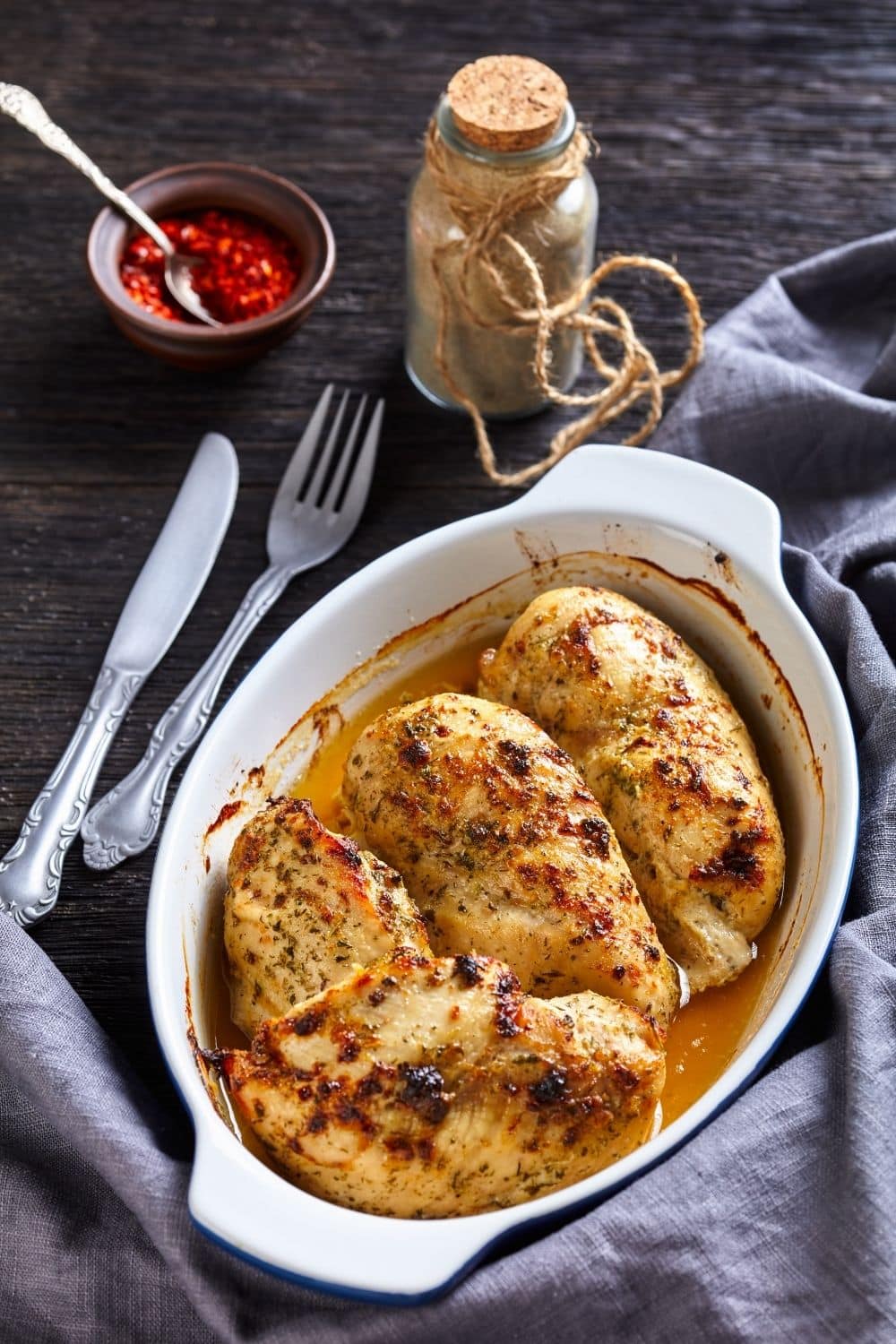
How Long to Bake Chicken Breast at 400 F
You should bake chicken breasts in a 400 F oven for 20 to 30 minutes. This baking time is for boneless and skinless chicken breasts of approximately one-inch thickness. As a result, the time will change based on the thickness of the breasts, your oven's performance, and whether or not the breasts were covered with foil or not during baking.
How Long to Bake Chicken Breast at 400 F in Foil
Cover the chicken breasts with aluminum foil and bake them at 400 F for 30 minutes. Season the breasts with salt, pepper, and some herbs, and wrap them with foil. During cooking, they will absorb the flavors of the spices and herbs, and the foil will help them stay moist and juicy.
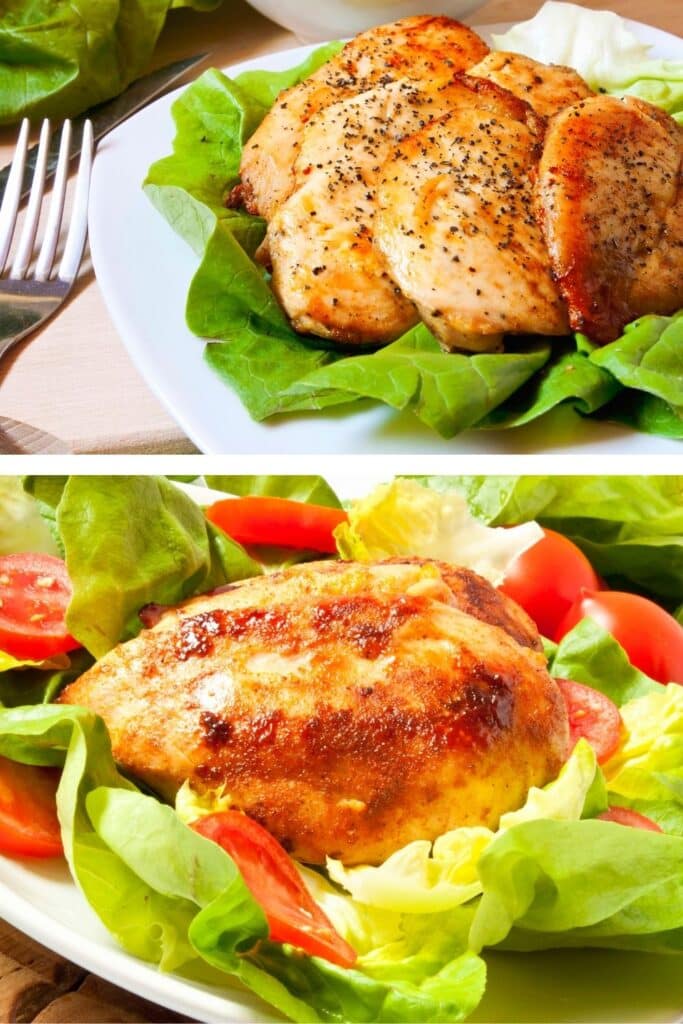
How Long to Bake Chicken Breast at 400 F Uncovered
Usually, baking chicken breast uncovered in a 400 F oven will take about 25 minutes. In my opinion, baking chicken breast uncovered is a sensitive operation because, if done incorrectly, the chicken breasts will dry out and be unappealing.
- The first step is to rub the chicken breast with olive oil or melted butter, or prepare a marinade and let the breasts soak in it for 2 to 3 hours so they can absorb the flavor and moisture.
- After that, pour about 1 cup of liquid into the baking pan, such as melted butter, lemon juice, vinegar, or any mix you desire. Then, place the chicken in the oven to cook through.
- Check the internal temperature of the chicken breast 5 minutes before the recommended baking time has elapsed. For example, start checking the temperature after 20 minutes of baking and keep doing that every 2 minutes or so until it is cooked through. The temperature should reach between 160 F and 170 F when done.
Cooking chicken breasts covered at 400F will give them a brown and golden color that you won't get with a lower temperature.
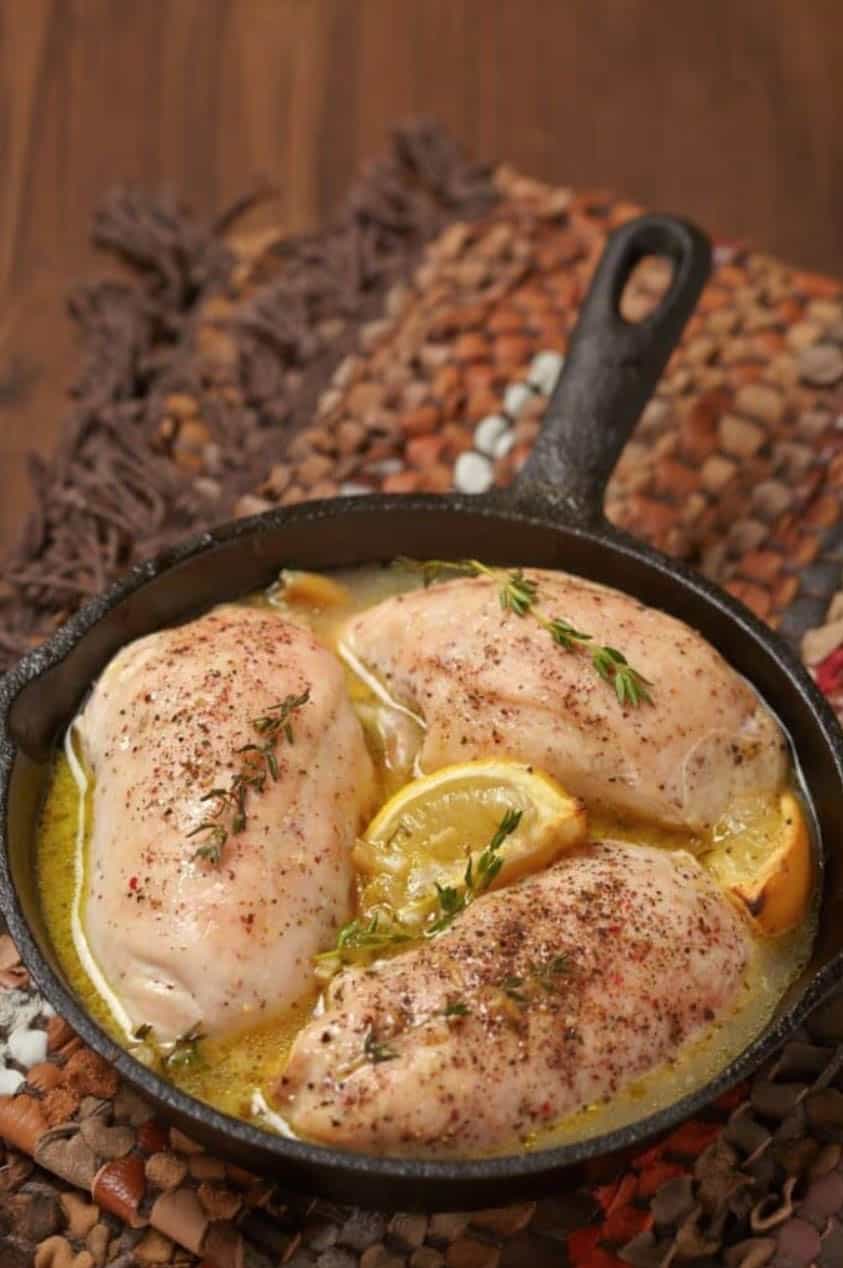
How Long to Bake Chicken Breast at 400 F in an Air Fryer
Cooking chicken breasts covered with foil in an air fryer at 400 F takes about 20 minutes, and uncovered, it takes 16 to 20 minutes, flipping once. In order to bake your chicken breasts in an air fryer, you should follow the same rules as cooking them in a conventional oven. The air fryer should be preheated to 400 F for no more than 3 minutes. If you intend to bake the breasts uncovered, soak them in a marinade before cooking.
Lastly, spray the basket and breasts of the air fryer to prevent sticking. Do not overload the air fryer to ensure the chicken breasts cook evenly. If you have many chicken breasts to cook, I recommend that you cook them in batches.
How Long to Bake Chicken Breast at 400 F From Frozen
Chicken breasts baked from frozen at 400 F in the oven will take about 40-50 minutes and about 15-25 minutes in the air fryer at the same temperature. In case you have frozen chicken breasts that are not seasoned, it is a good idea to thaw them first. To do this, simply place the frozen breasts in the fridge and they will be defrosted in about 12 hours. Alternatively, you could thaw the chicken in warm water, which should take less than 3 hours.
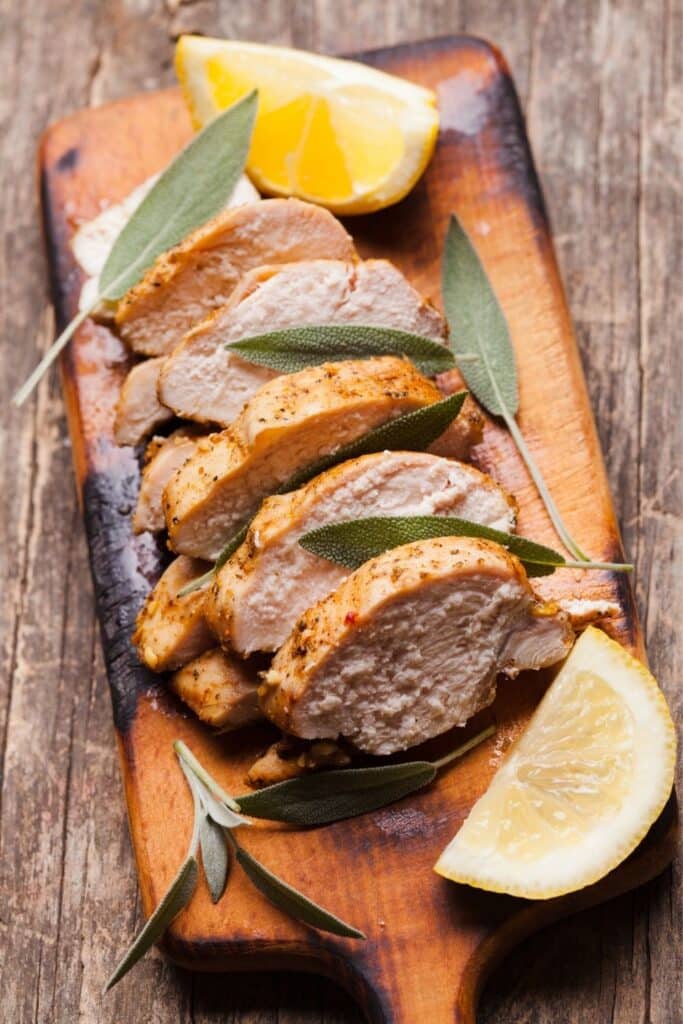
Baked Chicken Breast Ingredients
- 6 boneless, skinless chicken breasts
- 2 tablespoons extra virgin olive oil
- 1 teaspoon Italian seasoning
- ½ teaspoon kosher salt
- ¼ teaspoon paprika
- ¼ teaspoon ground black pepper
- Melted butter or vegetable oil, for greasing
How to Bake Chicken Breast at 400 F
- Preheat the oven to 400 F.
- Rub chicken breasts with olive oil, Italian seasoning, kosher salt, paprika, and ground black pepper.
- Make sure the chicken breasts are well coated.
- Grease a baking pan with melted butter or vegetable oil.
- Bake the chicken breasts for 25 to 30 minutes or until their internal temperature reaches 165 F.
- Let the baked chicken breast rest for 5 minutes.
- Serve the chicken breasts with your favorite sides.
Is it Better to Bake Chicken at 350 F or 400 F?
The reason why baking chicken breast at 400 F is better than 350 F is that cooking them at a high temperature will require fewer minutes and will garner more color. However, this does not mean that you should bake chicken breasts at higher temperatures than 400 F because that will increase the risk of the chicken drying out. Try to avoid baking at temperatures higher than 400 F.
How to Know Chicken Breast is Cooked
In order to know whether your chicken breast is completely cooked, simply insert your food thermometer into the thickest part of it and check the internal temperature. When the thermometer reads 160 F to 170 F, your chicken breast will be perfectly cooked.
How to Know Chicken Breast is Cooked Without a Thermometer
If you want to check if the chicken breasts are cooked properly, simply cut into it to determine the color. The chicken breast should be white throughout rather than pink.
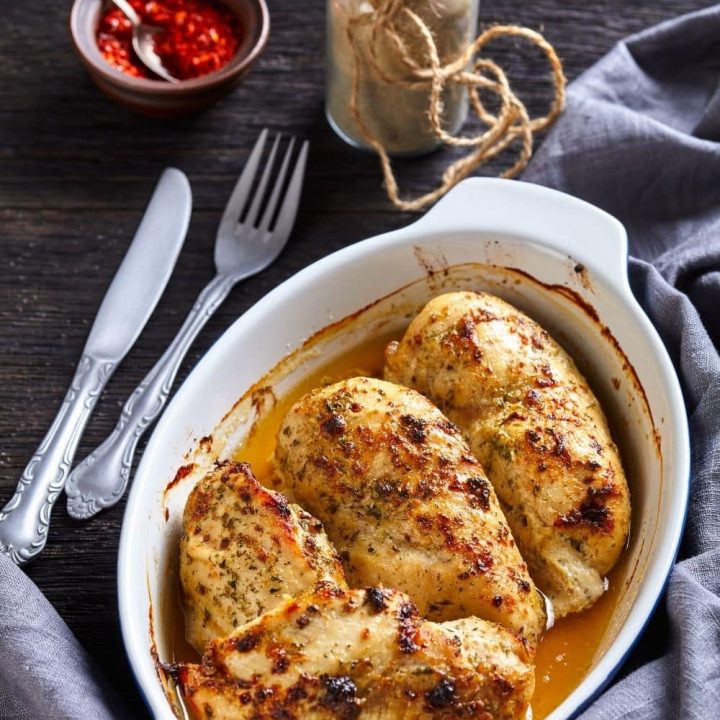
How Long to Bake Chicken Breast at 400 F
Baked chicken breasts are wonderful because they are naturally lean and packed with protein. All you have to do is coat them with some oil and herbs, and bake them. If you want really juicy chicken breasts, you should cook them at a high temperature such as 400 F to seal in the juices but be careful not to overcook them. This post will show you how long to bake chicken breast at 400 F in the oven, in an air fryer, from frozen, and more.
Ingredients
- 6 boneless, skinless chicken breasts
- 2 tablespoons extra virgin olive oil
- 1 teaspoon Italian seasoning
- ½ teaspoon kosher salt
- ¼ teaspoon paprika
- ¼ teaspoon ground black pepper
- Melted butter or vegetable oil, for greasing
Instructions
- Preheat the oven to 400 F.
- Rub chicken breasts with olive oil, Italian seasoning, kosher salt, paprika, and ground black pepper.
- Make sure the chicken breasts are well coated.
- Grease a baking pan with melted butter or vegetable oil.
- Bake the chicken breasts for 25 to 30 minutes or until their internal temperature reaches 165 F.
- Let the baked chicken breast rest for 5 minutes.
- Serve the chicken breasts with your favorite sides.
Nutrition Information:
Yield: 4 Serving Size: 1Amount Per Serving:Calories: 414Total Fat: 20gSaturated Fat: 5gTrans Fat: 0gUnsaturated Fat: 13gCholesterol: 161mgSodium: 314mgCarbohydrates: 0gFiber: 0gSugar: 0gProtein: 56g


Linda Kekahuna
Thank you for simple, easy to follow recipes as yours. I will try your recipe for the chicken breasts (baking) and I will be coming back to leave a review. Wish me luck!
Kathleen North
Not all chicken breasts are 1” thick. Mine are 2” thick. You do not have info stating how much longer per 1/2 to 1” thicker.
Kat
Pound it down to 1 inch.
Dildo Smasher
Common Kathleen your better than this. Slice your 2” breasts in half now you have 2 breasts that are 1” and you keep the same cook time and feed more people.